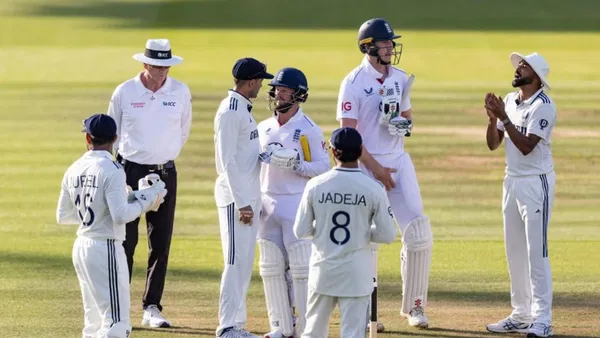Auto No-Ball: Know All About Third Umpire Checking Front-Foot No-Balls
Published - 06 Dec 2019, 10:48 PM | Updated - 23 Aug 2024, 06:32 AM

The ongoing first T20I between India and West Indies in Hyderabad marked the start of front-foot no-balls being exclusively monitored by the third umpires. In the recent past, the front-foot no-balls have caused a number of controversy as the on-field umpires failed to spot them. Recently during the Brisbane Test between Australia and Pakistan, the on-field umpire failed to call as many as 21 front-foot no-ball from the visitors.
And in order to minimise those errors, the ICC decided to give the responsibility of monitoring the front-foot no-ball to the third umpire. Thus from the ongoing game onward, the on-field umpires would be responsible for all other decisions ???in the usual way??? while the third umpire would monitor every ball for overstepping.
This is the second time that the ICC is trialling technology to monitor overstepping in international cricket, with the first one coming in a 2016 ODI series between England and Pakistan. Meanwhile, the IPL is also contemplating the idea of introducing an extra TV umpire for monitoring no-balls in its next edition.

Also Read: Watch: Rohit Sharma???s Pulls Off Two Breathtaking Saves Off Two Consecutive Deliveries
Sanjay Manjrekar explains new system:
Before the start of the first T20I, former India batsman and commentator Sanjay Manjrekar decided to explain to the fans how the system of ???auto no-ball??? would work. The ex-cricketer-turned-commentator stated how the umpires would team up for the job and how it would not affect the normal proceedings of the match.
???Basically, the third umpire sitting in the match referee???s box will get a split-screen image of every ball that is bowled in the match, the front-foot landing of every ball in the match,??? said Sanjay Manjrekar.
He further said: ???In two-three seconds after the ball is bowled, the umpires on the field will be told whether it???s a no-ball or not so that they can go ahead and make that decision. So, they can really focus on what???s really important ( referring to what will happen on the pitch) and the game continues.???
Here is the video of Sanjay Manjrekar explaining the auto no-ball:
Auto no-ball explained: Throughout this series, the third Umpire will look into every ball bowled and identify whether there has been any front foot infringement, thereby speeding up the process.Full video here ??https://bcci.tv/videos/139502/auto-no-ball-explained #INDvWI













